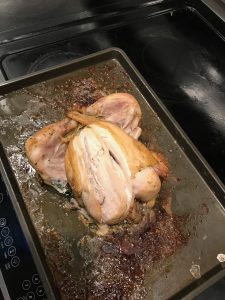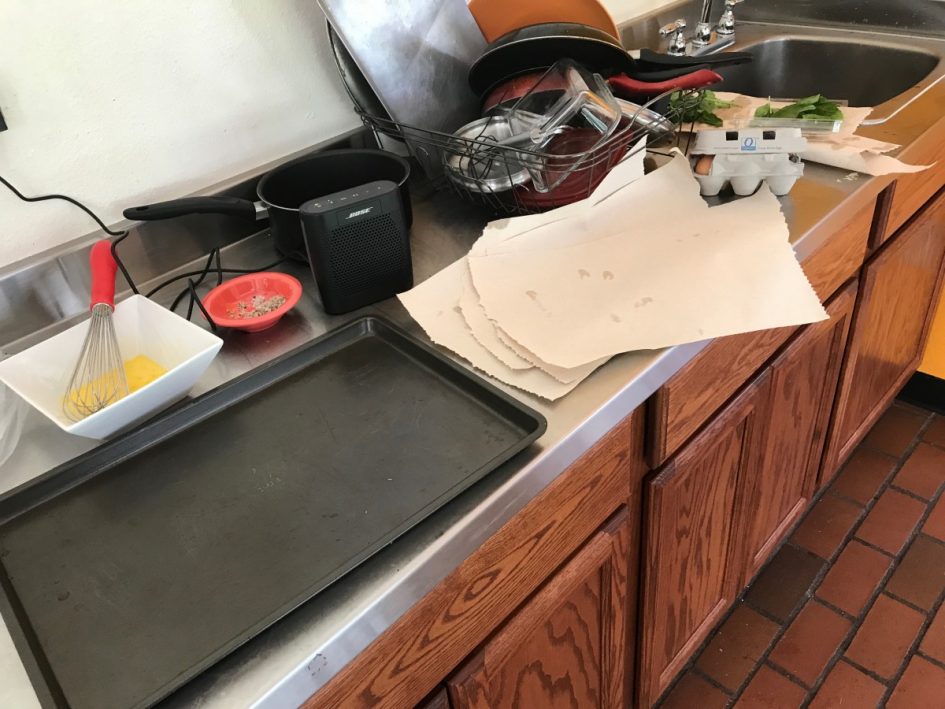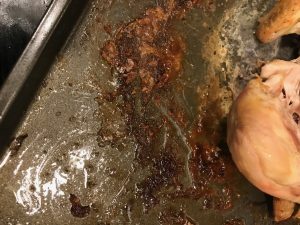Pictured above: the set-up for historical chicken roasting 🙂
This week, I made a delicious chicken in the style of Louis XV. In the book Thomas Jefferson’s Creme Brûlée by Thomas J. Craughwell, many historical foods are explored, including the average meal of the French aristocracy in the late 1700s. It’s a style of eating I have also learned about through the show The Supersizers Go…, which is a BBC show in which two comedians explore the diet, clothing, and culture of different eras and measure how it impacts their weight and body functions.
Despite lavish dishes (dozens of boiled eggs, jellies, macarons, hams, mutton, etc.), Louis’ favorite meal was apparently a simple roast chicken with basil, or as he called it, pocket au basilic.
According to Craughwell, “Louis perfected [the] dish…Leftovers were served to the pages, the young boys who waited on the king and his mistress.” It was a simple meal, uncommon for such a famously effusive king. Not to mention, it would have been a familiar dish to many peasants as well. In this case, food was a rare unifier between classes, and for me, a way to taste history.

I had to slice open the chicken while cooking to check that it was done, since I didn’t have a meat thermometer with me.
I worked from the recipe in the book, which simply called for a roast chicken stuffed with basil and other herbs and then brushed with egg, my own experience roasting chickens, and this recipe from The New York Times. I stuffed the chicken with basil, as well as sliding it up under the skin before roasting to suffuse the meat with flavor. I also patted the chicken totally dry with paper towels (this is the best method for crispy skin, as I have learned from my Mother), covered it in salt, pepper, and a pre-packaged herb blend, then brushed the whole thing with a beaten egg, and put it in the oven.
It took a lot longer to cook than I expected – almost an hour and 45 minutes in total. But it turned out delicious! Another great thing that happened was the Maillard Reaction, clearly exemplified with all the great brown stuff you can see in the tray. Wikipedia describes the reaction thus:
“The Maillard reaction (/maɪˈjɑːr/ my-YAR; French pronunciation: [majaʁ]) is a chemical reactionbetween amino acids and reducing sugars that gives browned food its distinctive flavor. Seared steaks, pan-fried dumplings, cookies and other kinds of biscuits, breads, toasted marshmallows, and many other foods, undergo this reaction. It is named after French chemist Louis-Camille Maillard, who first described it in 1912 while attempting to reproduce biological protein synthesis.”
This reaction adds a delicious flavor, and I like to scrape it off of the bottom of the tray for extra-salty goodness. Some describe the flavor as “umami,” especially when it occurs in meats.


Leave a Reply